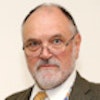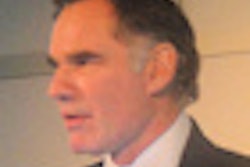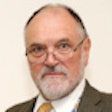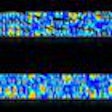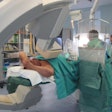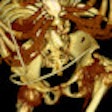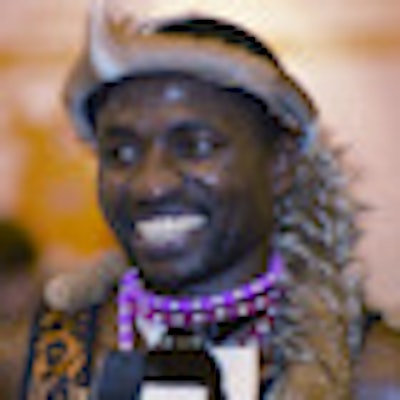
VIENNA - It's dynamic, exciting, and evolving. That's how an engaging presenter opened her talk about the state of academic radiology training in South Africa. The reality, as displayed in the following lectures at Saturday's "ESR meets" session, certainly lived up to the promise.
Dr. Zarina Lockhat, a professor and head of the radiology department at the University of Pretoria, spoke about radiology training in her country, and recognized that the pace of change was fast and furious and that technological advancement was driving the agenda.
"Academic radiology has to be balanced against a background of scientific and technological advancement," she said. "In 2002, Tom Cruise fascinated us in the film, 'Minority Report,' by using gesture recognition technology and scrolling of images, but now surgeons manipulate images in a sterile environment by just moving their hands. It's a reality."
 South African culture and costumes have been prominent at ECR 2013 because South Africa is one of the three host nations. The other two are Spain and Chile. Image courtesy of the European Society of Radiology.
South African culture and costumes have been prominent at ECR 2013 because South Africa is one of the three host nations. The other two are Spain and Chile. Image courtesy of the European Society of Radiology.Furthermore, so-called reasoning engines for radiologists are not so far off, she added. "Patient observations, signs, and symptoms are punched in and deep reasoning software systems give feedback on recommendations for further investigations and diagnoses."
Addressing a hot and recurring issue of the day, discussed in depth during other sessions at this year's ECR, Lockhat suggested that radiologists were emerging from the dark to interact with patients and clinicians. Referring to a recent European survey, clinicians said they wanted old-fashioned access to radiologists and straight-forward accurate radiology reports, although she reported that in her opinion, reports are a work of art.
Returning to the driving force of technology, Lockhat highlighted the current trend for computers to get smaller. "First they were in rooms, then desktops, then in our laps, now in our palms, and soon they'll be on our faces and possibly one day in our brains."
With a poignant nod to the value of traditional academic radiology, and despite all the technological advances, she read out an apt quote for the radiologist in training: "You only seek what you look for and recognize only what you know. No matter what you have -- smartphones, tablets, e-learning, e-resource -- if you can't see the abnormality, you cannot make the call."
Lockhat acknowledged the contributions of the College of Medicine in South Africa, the Radiological Society of South Africa (RSSA), and academic institutions in providing academic and clinical training. The RSSA provides an academic platform with webinars, conferences, workshops, and the publication of the South African Journal of Radiology. Also, among today's radiology training tools are a mixture of didactic lectures, case-based learning, e-learning, and Medical Imaging Resource Center (MIRC) teaching files, she said.
 ECR 2013 President Dr. José Bilbao (left) with Dr. Zarina Lockhat (fourth from the right) and her colleagues from South Africa during Saturday’s session. Image courtesy of the European Society of Radiology.
ECR 2013 President Dr. José Bilbao (left) with Dr. Zarina Lockhat (fourth from the right) and her colleagues from South Africa during Saturday’s session. Image courtesy of the European Society of Radiology.Another South African radiologist recently performed exceptionally well in the U.K. Royal College of Radiologists' examinations, illustrating how South African radiologists are carving a niche for themselves on the international radiology scene. This was confirmed by other lectures during Saturday's session. Dr. Janse van Rensburg, from the University of Stellenbosch, explained a new concept about the pathogenesis of tuberculosis that he had arrived at with his colleague, Dr. Richard Hewlett, from the same institution.
"The concept we propose is that basal cisternal meningitis in children due to tuberculosis is not a result of the well-known Rich focus theory, but rather the result of direct infection of the choroid plexi, which leads to infection in the cerebrospinal fluid (CSF) and exposure of the antigen to the basal cisterns. This invokes an inflammatory response leading to CSF obstruction, which in turn leads to the characteristic and predictable imaging findings in children," he said, summarizing the new theory.
The Rich theory has always been controversial over many years. Van Rensburg said South African researchers had always been skeptical because of the discrepancy between the MR images and the gross pathology and what the original work from the 1930s showed.
"This showed a cortical lesion meningitis that was not basal cisternal meningitis, but nobody could explain how something high in the brain caused meningitis at the base," he explained. "People suggested the patient was lying down, but they are usually walking around when diagnosed, or due to differences in blood vessels in the brain."
Van Rensburg credits Hewlett for the new explanation. "His explanation is just the logical theory after doing this for 20 years," he said. "He's the only person I know with the pathology and neurology knowledge to bring it all together."
Originally published in ECR Today on 10 March 2013.
Copyright © 2013 European Society of Radiology

